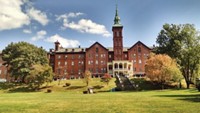Advertisement
Grab your lab coat. Let's get started
Welcome!
Welcome!
Create an account below to get 6 C&EN articles per month, receive newsletters and more - all free.
It seems this is your first time logging in online. Please enter the following information to continue.
As an ACS member you automatically get access to this site. All we need is few more details to create your reading experience.
Not you? Sign in with a different account.
Not you? Sign in with a different account.
ERROR 1
ERROR 1
ERROR 2
ERROR 2
ERROR 2
ERROR 2
ERROR 2
Password and Confirm password must match.
If you have an ACS member number, please enter it here so we can link this account to your membership. (optional)
ERROR 2
ACS values your privacy. By submitting your information, you are gaining access to C&EN and subscribing to our weekly newsletter. We use the information you provide to make your reading experience better, and we will never sell your data to third party members.
ACS News
Reactions: Impressive undergraduate research, thermodynamics of direct air capture, and click chemistry studies
June 21, 2024
| A version of this story appeared in
Volume 102, Issue 19
Letters to the editor
Kudos to undergraduates
During April, undergraduate students from schools in the Albany, New York, area once again took part in the research symposium sponsored by our American Chemical Society Eastern New York Section. Each year, I am so impressed by the quality and depth of the projects, including RNA research, acoustic-field gas-phase ion studies, and quantum mechanical research. It’s humbling for an older guy who still remembers being truly clueless and bumbling in undergraduate chemistry laboratories.
These are smart, hardworking students from Siena College, Skidmore College, Rensselaer Polytechnic Institute, Union College, the University at Albany, and several other local schools.
But in addition to the budding intellect, there’s a level of maturity that I don’t remember having at that age. Moreover, the enthusiasm they show in describing their work is inspiring.
We all know that chemistry is not a casual major in college. The work and dedication required to get through the curriculum can be daunting. Then throw in the pending career stress and the normal challenges of college life. I find it hard to fathom how these kids can then take on sophisticated research projects.
It has to be the mentors—college faculty, advisers, instructors, and adjunct faculty. They provide the guidance, inspiration, and feedback for the technical work, as well as the public speaking, such as showing students how to showcase their research. Hats off to all involved in these events!
Frank Coppa
Rensselaer, New York
Direct air capture

One of my professors said to me that I should never fight thermodynamics. Direct air capture (DAC), described in the June 3, 2024, issue of C&EN (page 24), seems to me to be a technology that is trying to do just that. While I certainly support serious efforts to reduce carbon dioxide emissions, picking the low-hanging fruit first simply has to provide the best and fastest route to an orderly transition that will take us to a future of low CO2 emissions. DAC is working with a very dilute fluid (air) containing 0.04% CO2. There are hundreds of thousands of sources that contain much more. Flue gas from coal-fired power plants, for example, contains around 12% CO2. For the cartoon on page 26 to be accurate, it should show 1 black dot for CO2 and 2,500 blue dots for air in the inlet, whereas a similar arrangement for a power plant exhaust would show 1 black dot and 8 blue dots.
Of course the technology will improve and the costs will come down, but thermodynamics says it will never be competitive with capture from more concentrated sources. Governments should support cost-effective methods that will allow the orderly transition we all want.
Charles A. Christopher
Arlington, Texas
Click chemistry
I was sincerely pleased to see the article on click chemistry and the recognition of the application to protein structure and cross-linking in C&EN (June 3, 2024, page 22). Very nicely done. I was particularly interested in the discussion under “Future Perfect” about the potential for reagents that link and unlink and the ability to control this process. Reagents that accomplish this were developed many, many years ago (J. Am. Chem. Soc. 1979, DOI: 10.1021/ja00505a043). The work was expanded to and further developed for antibodies; see for one example “Site-Directed Chemical Modification and Crosslinking of a Monoclonal Antibody Using Equilibrium Transfer Alkylating Crosslink Reagents” (Bioconjugate Chem. 1990, DOI: 10.1021/bc00001a005).
Rich Lawton
Ann Arbor, Michigan



Join the conversation
Contact the reporter
Submit a Letter to the Editor for publication
Engage with us on Twitter